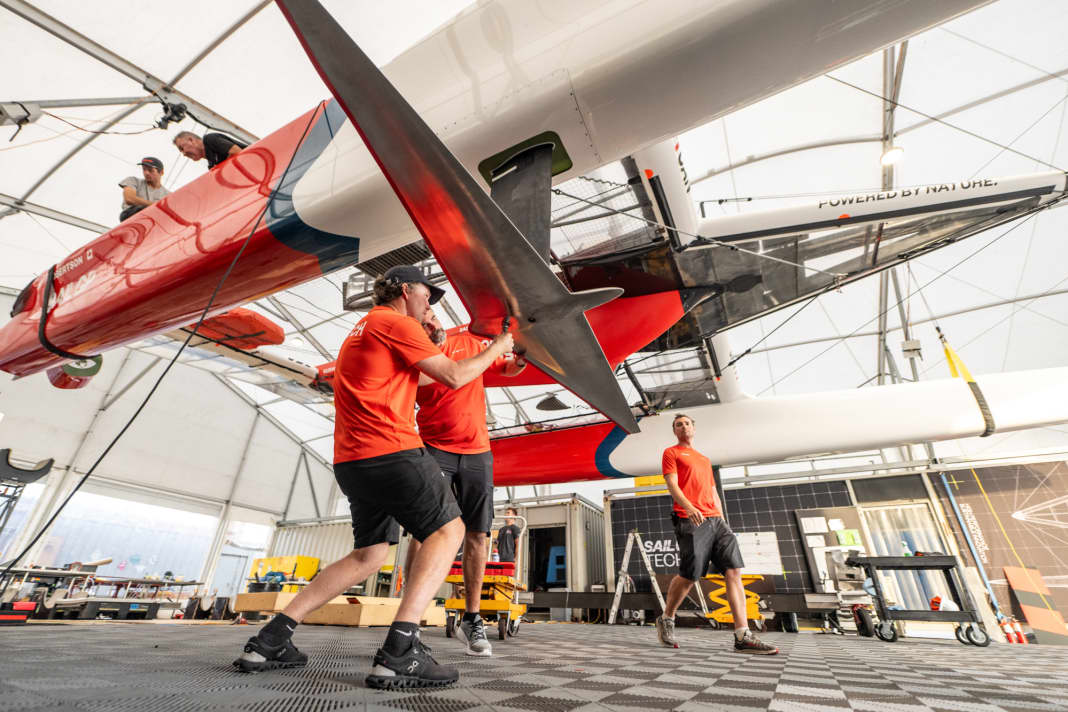





As SailGP is a strict one-design class in which the teams charter the boats from the organiser, the class also continues to develop the boats so that they retain their appeal as state of the art and remain attractive to top sailors and sponsors. And this development is currently showing very exciting results: After the F50 cats previously sailed with L-shaped main foils, SailGP used a new type of T-foil for the first time in tests at the race in Cadiz, Spain. And what a new one it is: the high-tech profile consists of a carbon fibre shaft and a horizontal wing made of milled titanium and has a significantly lower profile than its predecessors. The aim was to reduce the loads on the centreboard box and thus improve the maintenance effort and, of course, the performance, according to SailGP in a press release. The test driver was the Danish Rockwool team led by skipper Nicolai Sehested.
Of course, the new foil was probably also intended to counteract the development of foils in the America's Cup, where the boats have been sailing with T- or Y-foils for some time. The fact that the new set so clearly increased speed is of course a pleasant side effect: the speed potential increased by around 15 per cent in light winds off Cadiz: the test boat sailed at 32 knots in around seven to nine knots of wind, i.e. four times the wind speed.
The cavitation limit has been significantly shifted
More importantly, the limit at which cavitation sets in has been moved upwards by almost six knots. This is a huge and immensely important leap, because if cavitation sets in on a foil, bubbles form on the trailing edge of the foil, which damage the surfaces of the profile, lead to a kind of "pitting" and slow down the boat as well as significantly impairing manoeuvrability. Moving this limit is a bit like the Holy Grail of foil development, as it is the only way to increase speed without damaging the material.
SailGP chief developer Alex Reid was completely satisfied: "I thought we would need a bit more wind, but the boat started foiling and the performance was simply impressive!" And this despite the fact that the new profiles together are almost 80 kilograms heavier than the old L-foils. As work is also currently underway on a new T-foil for the rudders, which will be tested at the next race in Dubai, the team is confident of finally breaking the 100 km/h barrier. Previously, the highest measured speed of an F50 cat was 99.94 km/h, but now they are confident of being able to reach around 110 km/h, about 59 knots.
Slowly but surely, the F50s are working their way towards the existing sailing speed record, which has been held for eleven years now by Australian Paul Larsen with his specially developed boat "Vestas Sailrocket 2". Back then, he sailed at 65.45 knots, a record that various teams have been chasing ever since. The new foils and rudders are to be used in Season 5 following further successful tests in all wind conditions.
